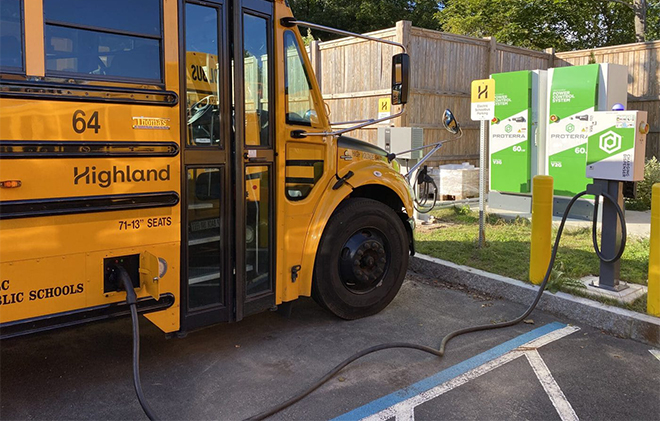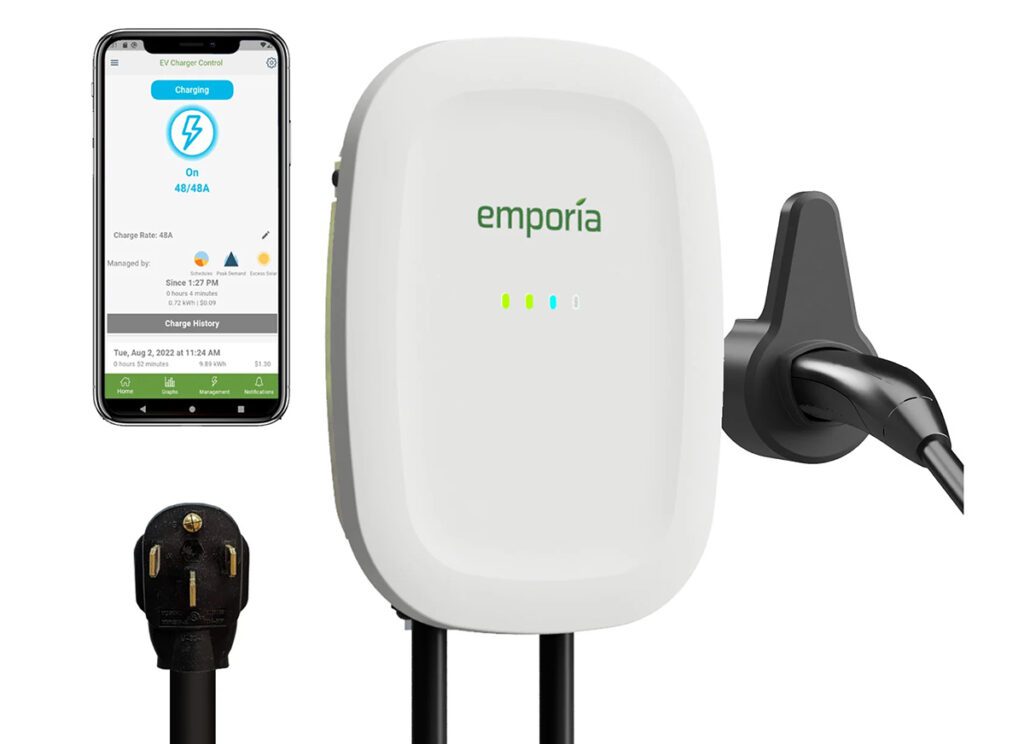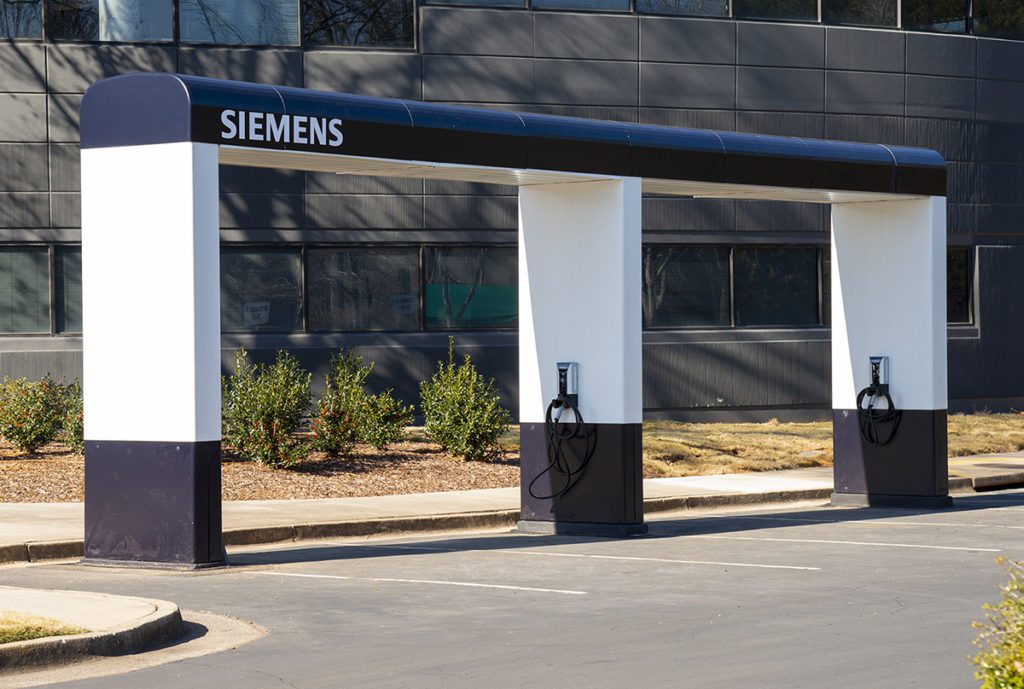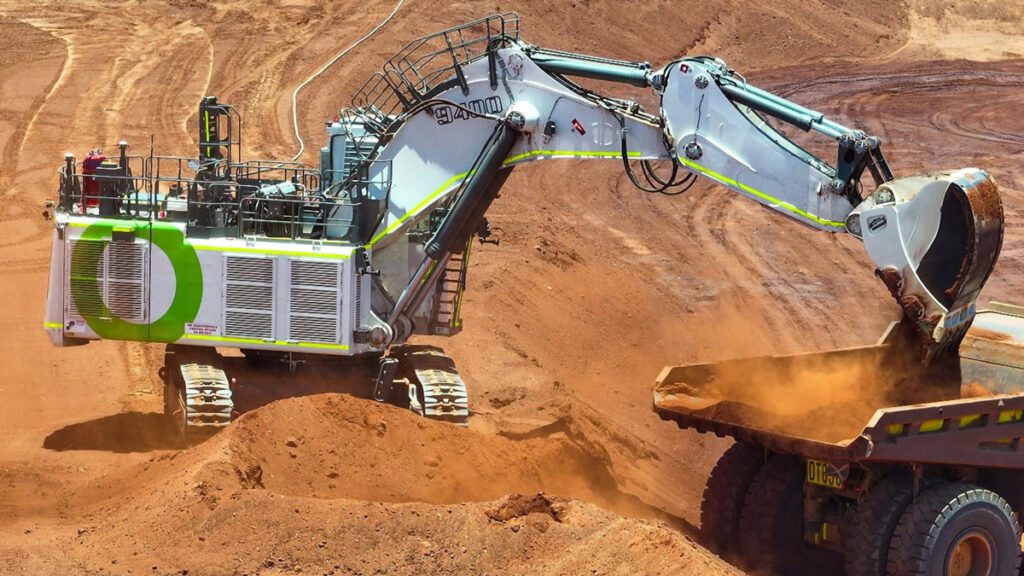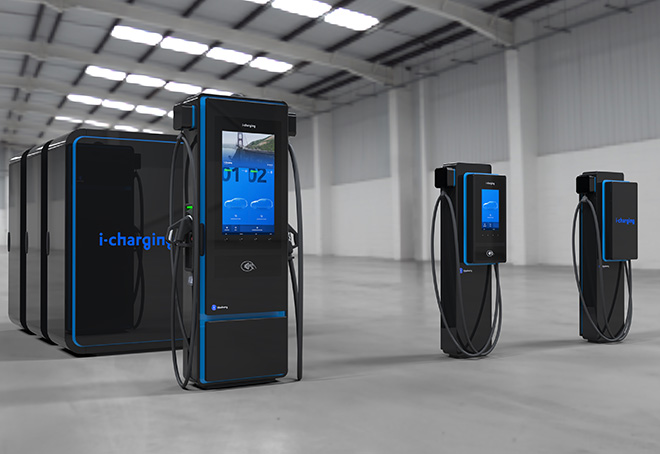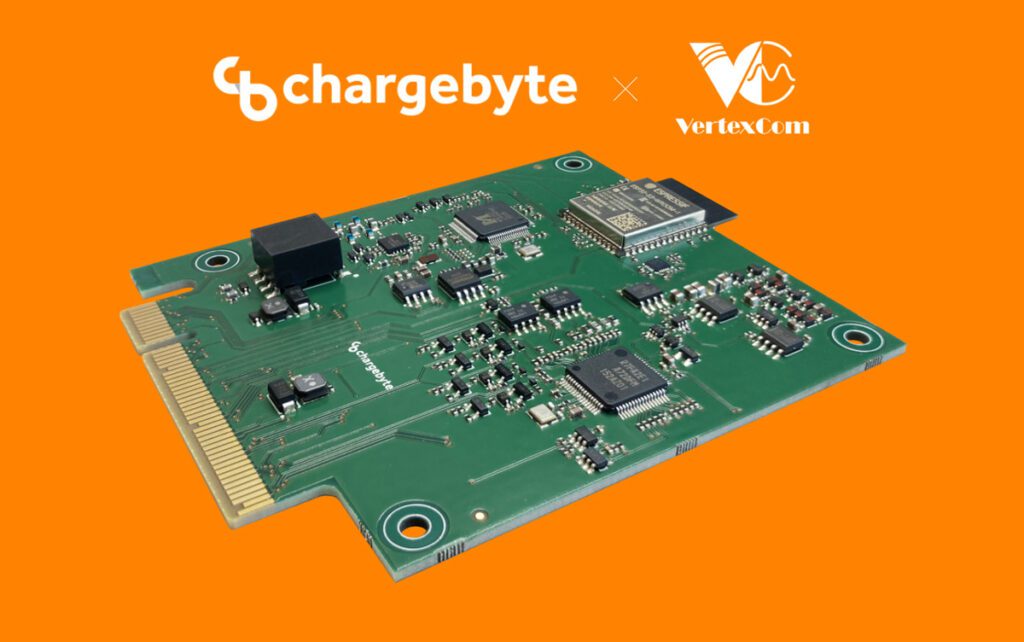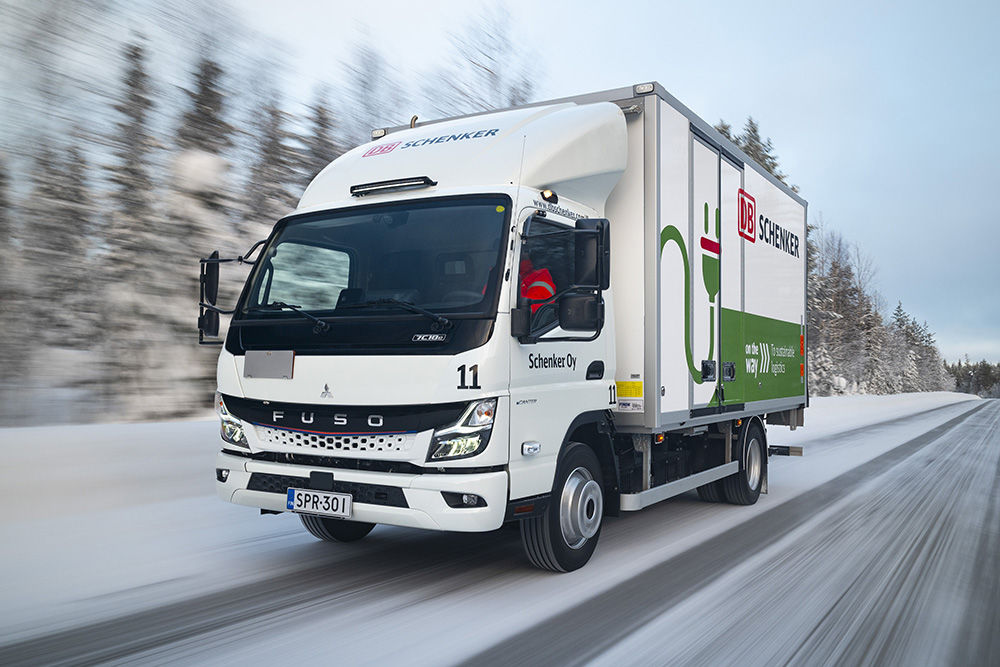Electric school buses are often cited as an ideal use case for vehicle-to-grid technology. Most school buses transport students for only a few hours per day when school is in session, and are parked during the summer months, when demand for electricity is often highest.
A number of V2G school bus pilots are underway around the country. One of these, at Beverly Public Schools in Beverly, Massachusetts, has reported some encouraging real-world results. In conjunction with Highland Electric Fleets and National Grid, a Thomas Built Buses Saf-T-Liner C2 Jouley electric school bus equipped with a Proterra Powered battery system discharged nearly 3 MWh of electricity stored in the bus to the regional electric grid over the course of 30 events this summer.
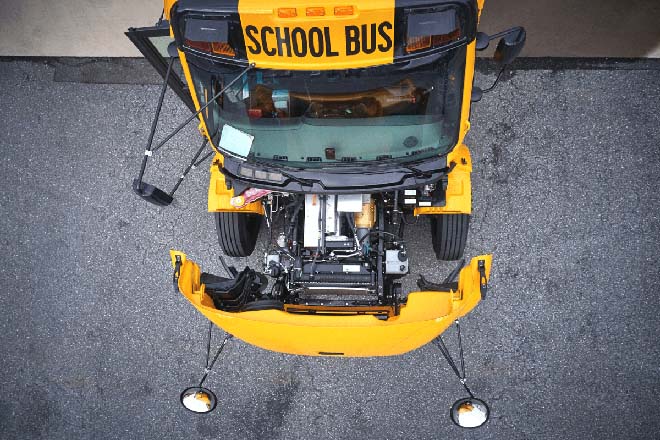

The Saf-T-Liner C2 Jouley offers 226 kWh of total energy capacity. Highland provided the bus and EVSE to the school district under a mileage-based subscription, and worked with National Grid to ensure that the site was prepared for energy discharge. National Grid used the energy stored in the electric school bus battery on 30 different occasions to lower demand on the grid during times of peak demand. National Grid compensates participants in its V2G program for their energy services, which helps to defray the additional up-front cost of electric school buses (or any other eligible vehicles).
“By delivering stored clean energy back to the grid when it’s needed most, electric school buses can help create a more resilient local power system and reduce the dependence on expensive fossil fuel power plants,” said Gareth Joyce, President of Proterra. “Switching to zero-emission, electric school buses signals a transformational shift towards clean transportation and clean energy.”
“We are proud to have added several customers and vendors to our programs this year that are using vehicle-to-grid technology,” said John Isberg, Vice President of Customer Sales and Solutions at National Grid. “This underlines the strength of the technology-neutral approach of the Connected Solutions Daily Dispatch program. Through this single program we have enrolled batteries, fuel cells, thermal storage, V2G, and many other technologies without needing to confuse customers and vendors with separate programs and incentives for each technology.”
Source: Proterra



